When it comes to designing your living room, choosing the right paint color is a crucial step that can make or break the entire aesthetic.
With so many options available, it can be overwhelming to decide which are the best living room paint colors.
Do you opt for something bright and bold, or stick with a more muted and classic palette?
And, how do you make sure that the color you choose is going to make your space look bigger and brighter without appearing too overwhelming?
Fortunately, I’ve done the research for you and have compiled a list of the best living room paint colors and finishes to help transform your space.
This post may contain affiliate links. As an Amazon Associate and a participant in other affiliate programs, I earn a commission on qualifying purchases at no additional cost to you.
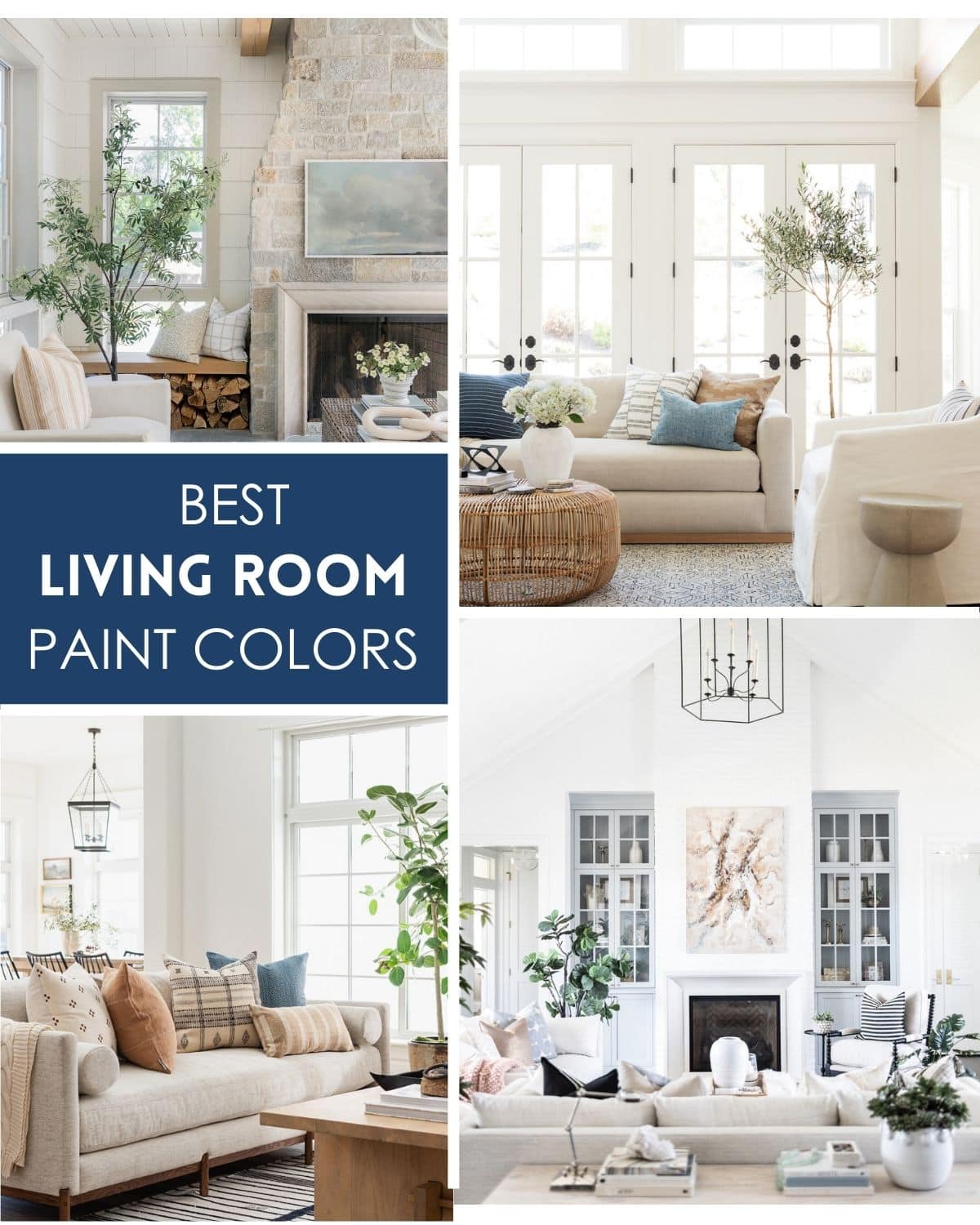
Don’t let the endless array of paint color swatches deter you from getting your living room painted. I know this is where most people really struggle.
I will cover everything you need to know about choosing the best living room paint colors, including which colors work best for different types of spaces and finishes you should use to achieve the look you want.
So, whether you’re looking for a refreshing update or starting from scratch, let’s dive into the world of paint colors and discover how they can transform your living room into a truly beautiful space.
What Paint Colors Look Good In A Living Room
When choosing paint colors for a living room, it’s important to consider the overall mood and style you want to create.
Neutral shades like beige, cream, off-white, or light gray are versatile and create a calm and serene atmosphere.
They also provide a neutral backdrop for other elements in the room, such as furniture and artwork.
Colors inspired by nature, such as soft browns, warm taupes, or light terracottas, can add warmth and coziness to the living room. These colors work well in rooms with ample natural light.
Shades of blue and green, like soft blues, seafoam greens, or sage greens, can create a tranquil and refreshing ambiance.
If you want to add a pop of color or make a statement, consider using bold accent colors. For example, a feature wall painted in a deep navy blue, rich emerald green, can create a focal point and add visual interest to the room.
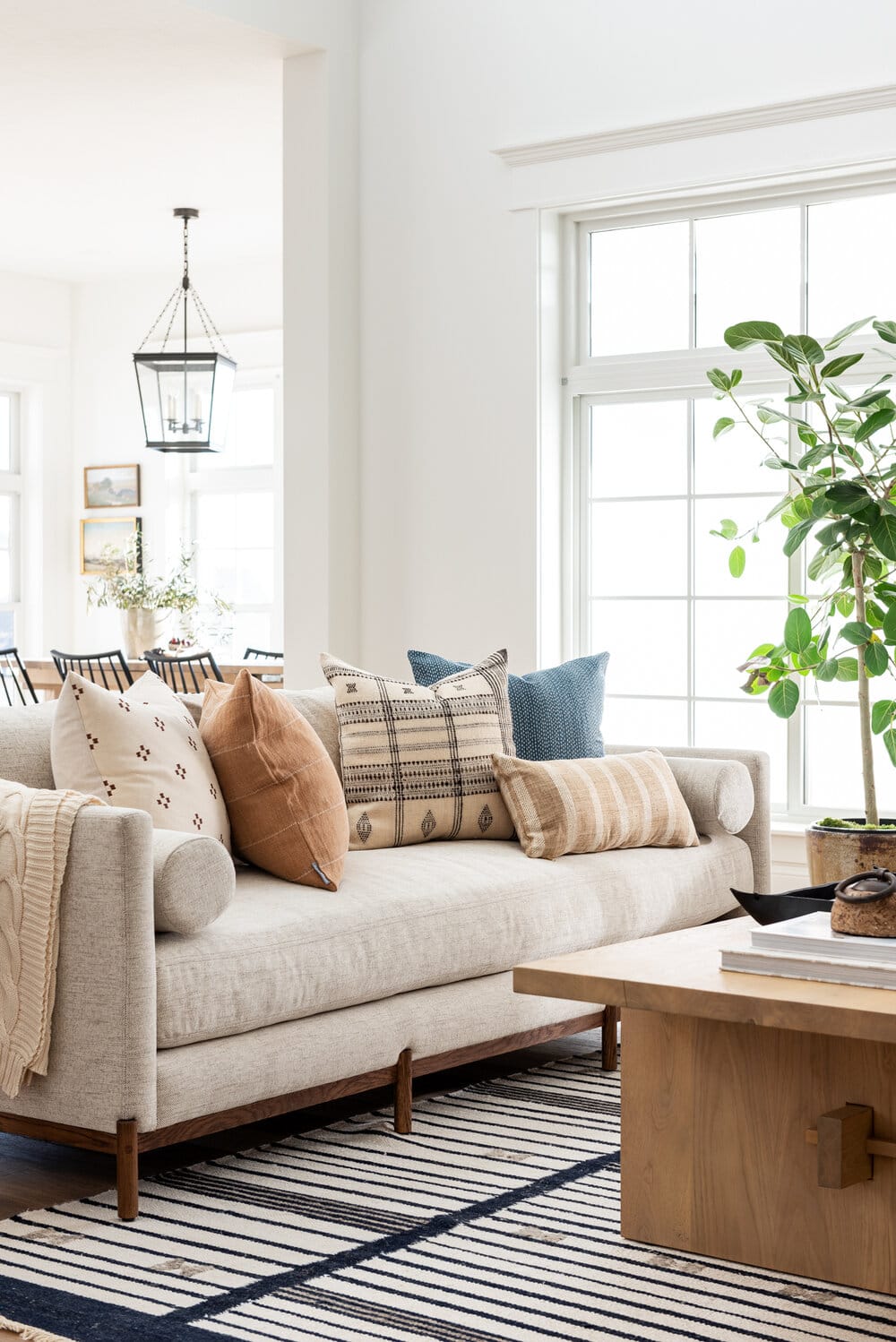
What Paint Colors Make A Living Room Look Bigger
If you want to make your living room look bigger, there are certain shades that can help create the illusion of more space.
These colors tend to be light and bright, such as soft neutral tones like beige, white, or light gray. Pale blues and greens can also work well, as they give off a calming and soothing vibe that can make a room feel more spacious.
Avoid dark colors or highly saturated hues, as these can make a room appear smaller and more cramped.
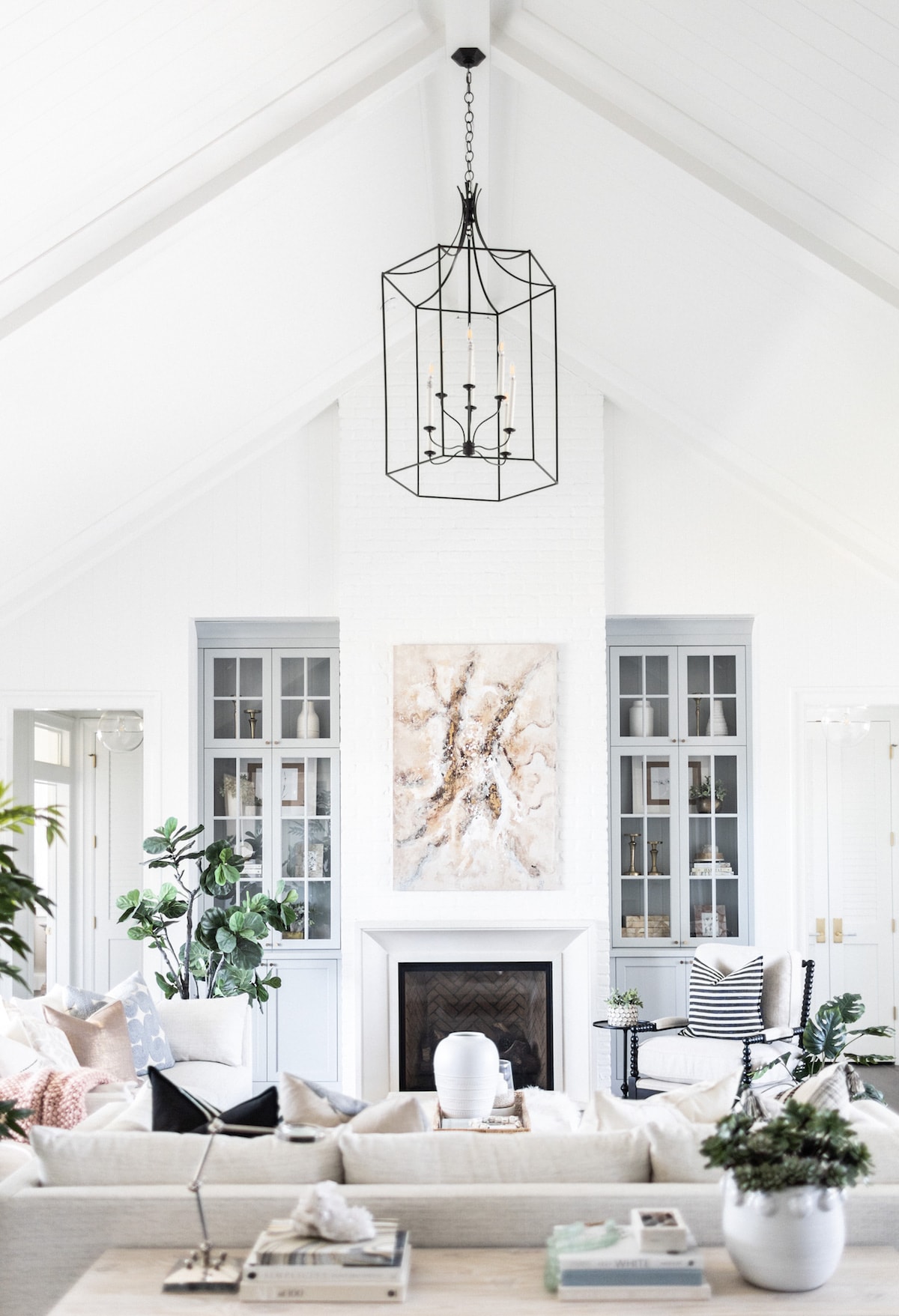
What Paint Colors Make A Living Room Look Brighter
When it comes to making a room feel brighter, the answer is simple: light colors.
Light shades like cream and white can create an airy feel, while warm neutrals like beige or light gray provide a cozy, welcoming atmosphere.
But truly white is the classic shade that is a foolproof way to make any room look brighter and more spacious.
Remember to always test your paint out on the wall before starting your project.
Don’t Forget To Order Paint Samples!
No matter what a photo looks like or description, every paint color will look different in your own space. It is so important to test a paint color before you commit to it.
That’s why I love buying these peel & stick samples.
It makes it so easy & affordable to test colors!
How To Select The Best Paint Color For A Living Room
Selecting the best paint color for your living room can be a subjective decision based on personal preference, but here are some tips to help you choose a paint color that will be the best one for you.
- Consider the room’s purpose: Think about how you want the room to feel and the mood you want to create. For example, if it’s a bedroom, you may want a calm and relaxing color, while a home office might benefit from a color that promotes focus and productivity.
- Assess the lighting: Take into account the natural and artificial lighting in the room. Natural light can affect how a color appears throughout the day, so consider testing paint samples at different times. Artificial lighting, such as warm or cool-toned bulbs, can also influence the color’s appearance.
- Look at existing elements: Take stock of the furniture, flooring, and other fixed elements in the room. Consider whether you want the paint color to complement or contrast with these elements. For example, if you have a vibrant piece of furniture, you might choose a neutral paint color to let it stand out.
What Finish Should You Use For Living Room Paint
There are a couple of different paint finishes you can choose for your living room.
It really depends on if you have little kids touching the walls all the time or if it is a room that does not get as much use. Think about functionality and cleaning.
Matte finishes have a non-reflective appearance, providing a smooth and velvety look. They are great for hiding imperfections on walls and ceilings.
However, they tend to be less durable and more prone to staining, so they may not be the best choice for high-traffic areas or rooms that require frequent cleaning.
These finishes offer a subtle sheen and a smooth, soft appearance. They strike a balance between durability and aesthetics. Eggshell finishes are slightly more lustrous than satin finishes.
They are easier to clean and more resistant to stains compared to matte finishes, making them suitable for living rooms that receive moderate foot traffic.
Ultimately, the choice of paint finish depends on your personal preferences, the style of the room, the desired level of durability, and the amount of natural and artificial light in the space.
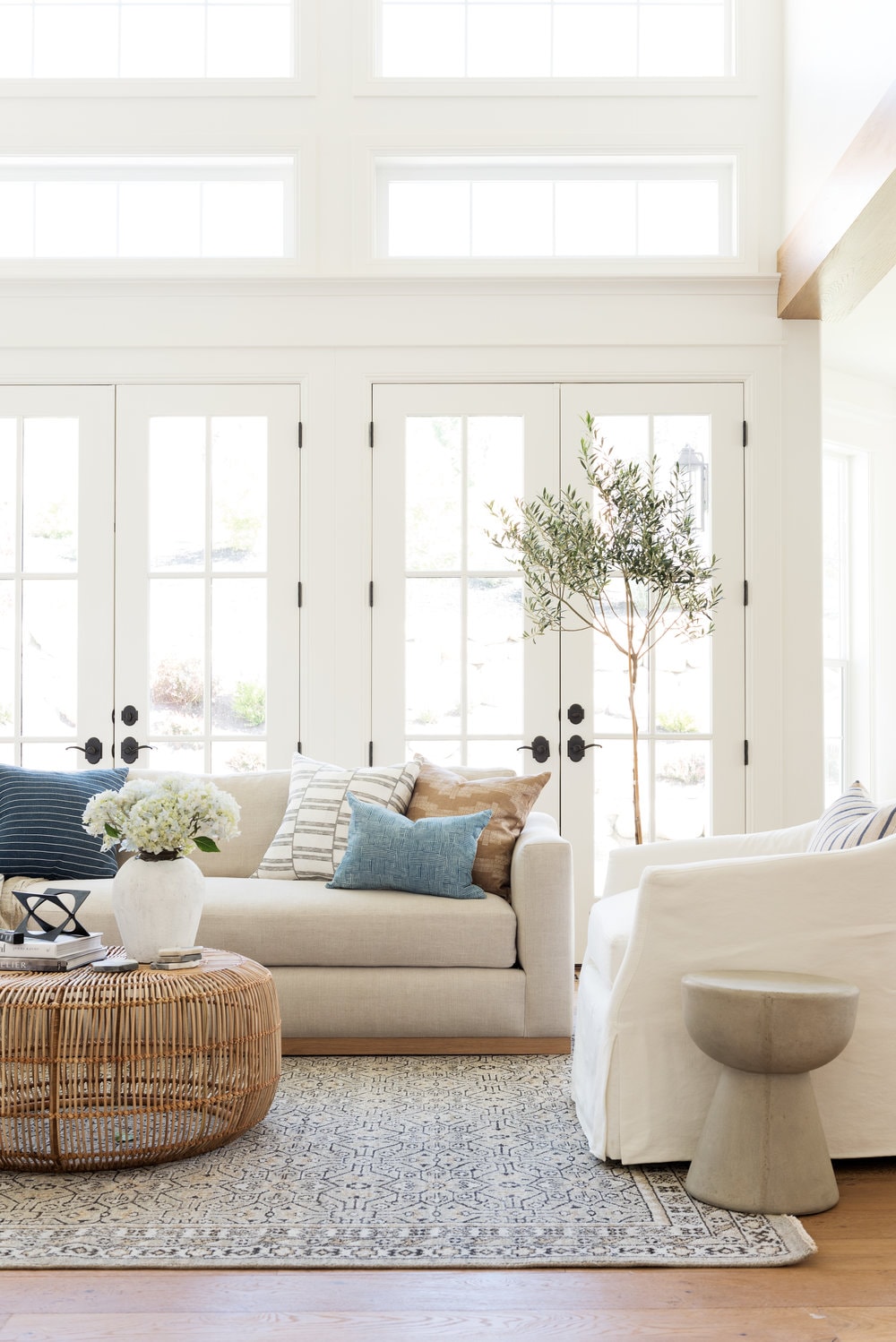
Best Color For Living Room Walls
These are the top paint colors for a living room. They work for many different design styles and are what many designers use for their clients.
Best Living Room Paint Colors
White Dove by Benjamin Moore is a versatile and popular paint color known for its timeless and classic appeal.
This soft white shade has a subtle warm undertone, making it an excellent choice for creating a bright and inviting atmosphere in any room.
With its high reflectivity, Chantilly Lace amplifies natural light, making spaces feel open and spacious.
The color is versatile and pairs well with a variety of design styles, from contemporary to traditional.
One of the notable features of Chantilly Lace is its ability to maintain its crisp whiteness without appearing stark or sterile.
It adds a touch of warmth to the room while still maintaining a clean and polished look.
Agreeable Gray exhibits subtle undertones of taupe and greige, giving it a soft and soothing appearance.
It has the ability to adapt to different lighting conditions, appearing cooler in some instances and warmer in others.
Swiss Coffee has a gentle undertone of yellow, giving it a soft and warm appearance without being overly saturated.
The beauty of Swiss Coffee lies in its ability to adapt to different lighting conditions.
It can appear slightly warmer in rooms with ample natural light or in spaces with less natural light, it retains its warmth while providing a subtle brightness that opens up the room.
Repose Gray has a soft and subtle appearance that adds depth and dimension to a room without overpowering it.
Its cool gray undertones bring a sense of tranquility and serenity, while the warm beige undertones provide a hint of coziness and warmth.
One of the standout features of Classic Gray is its remarkable adaptability to different lighting conditions.
It beautifully reflects natural light, creating a luminous and airy feel, while maintaining a sense of warmth and coziness in spaces with artificial lighting.
One of the notable qualities of Hale Navy is its ability to create a sense of coziness and warmth.
Despite being a dark color, it doesn't feel cold or overpowering.
Instead, it provides a sense of depth and character, infusing the room with a cozy and intimate ambiance.
Choosing the right paint color for your living room is essential in creating a warm and inviting space.
While some colors like beige and white are timeless classics, other bolder choices like navy blue and green can add depth and personality to a room.
To make a small living room appear larger, consider using light colors like soft grays, while bright whites can instantly add lightness to a space.
Remember to always consider the existing furniture and decor in your living room to find a color that complements your style.
With these tips, you’ll be well on your way to choosing the perfect living room paint color.


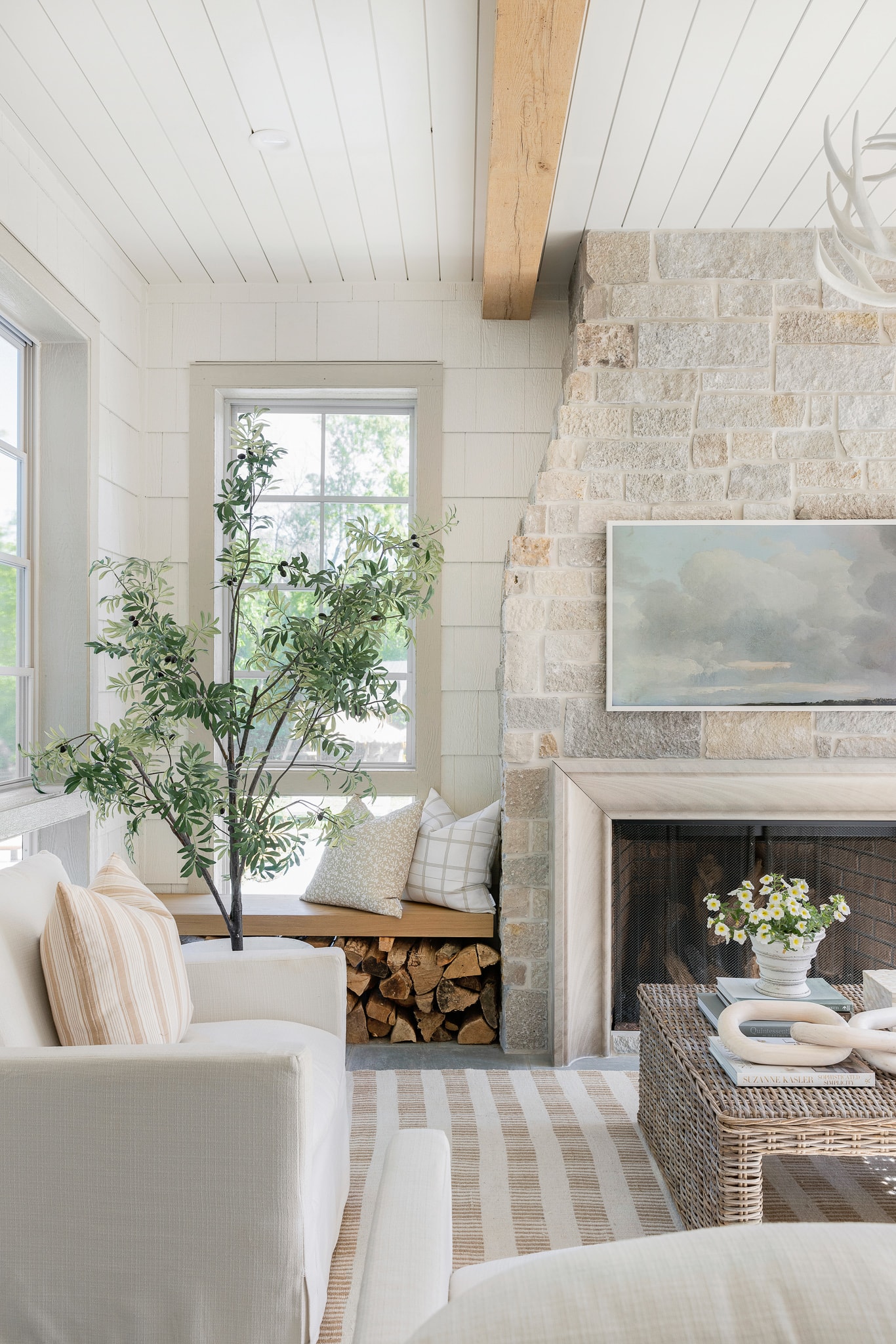



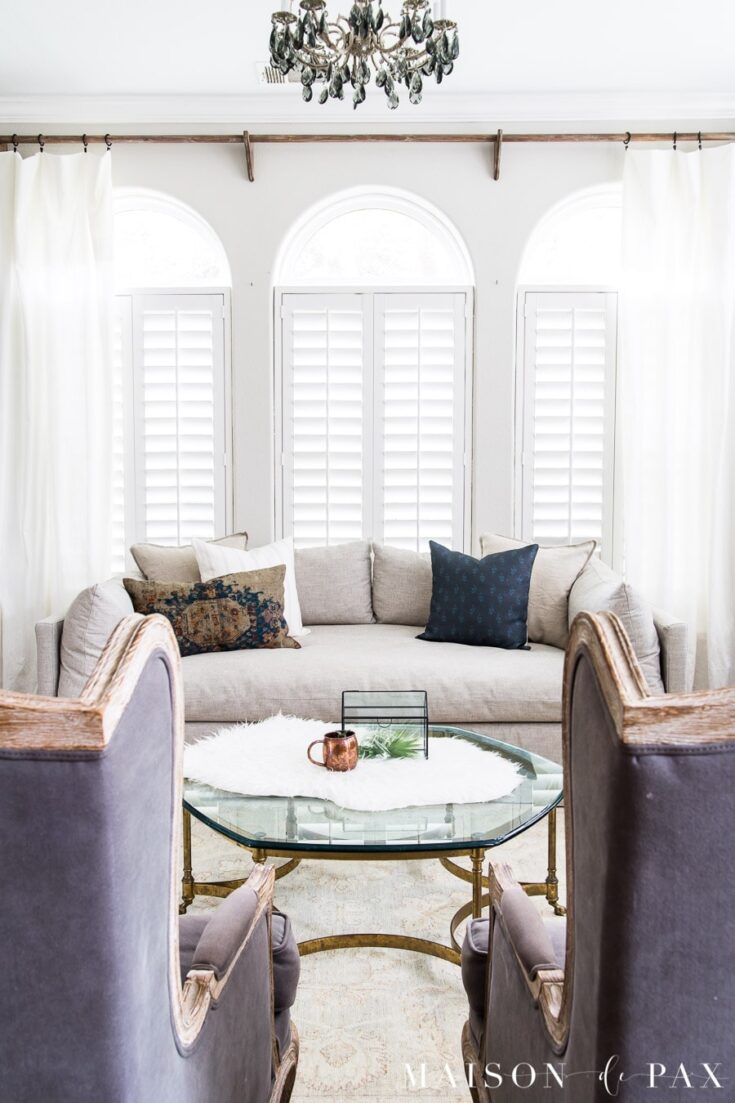
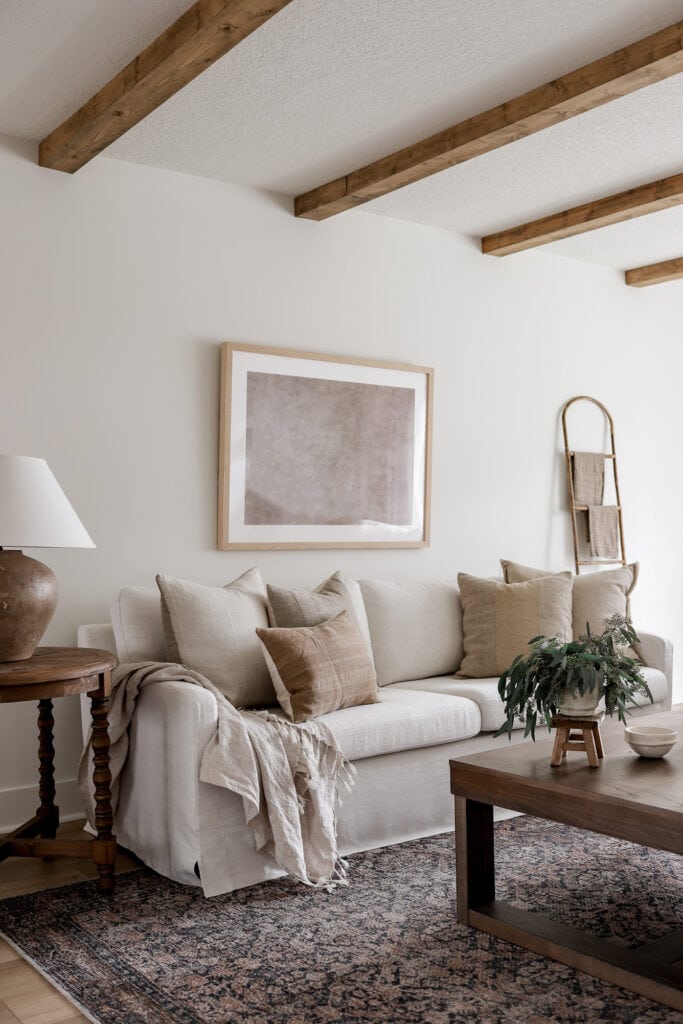

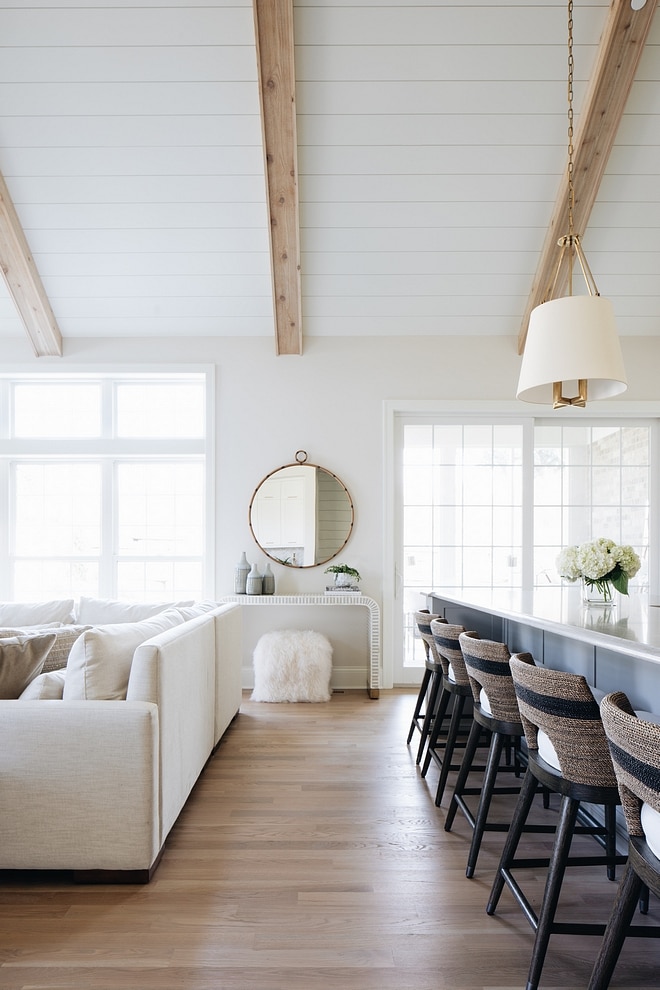
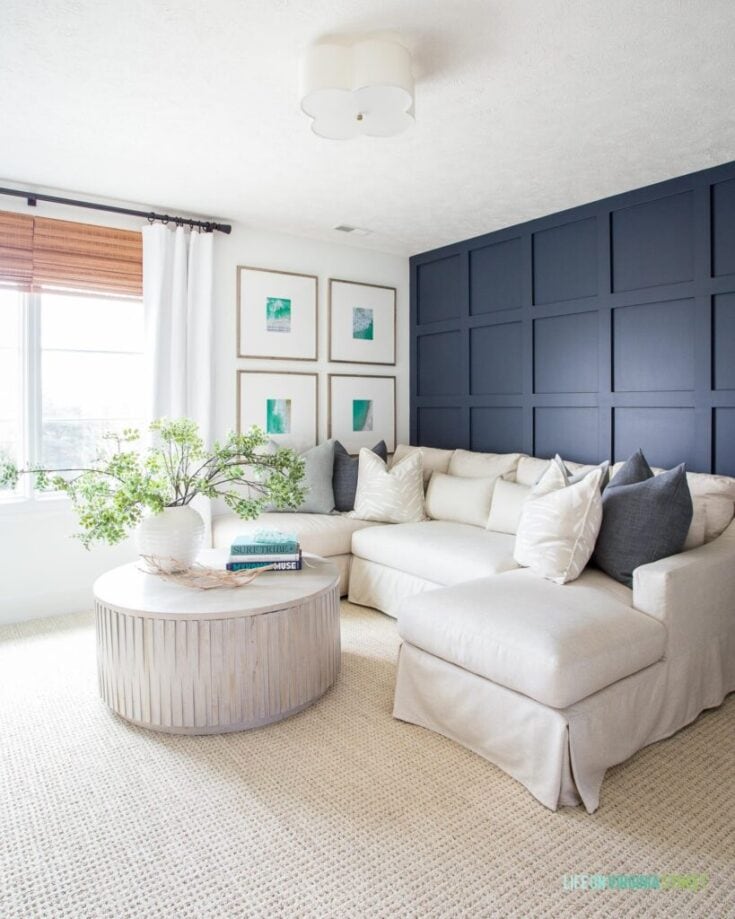







The white rooms work in this post due to the wood. It keeps the space from being too cold or boring. I have had white walls over the years but have turned to a warmer griege or is it taupe? What is the difference?
Love neutral colors palettes but when it comes to dark bold colors, navy blue is the best.